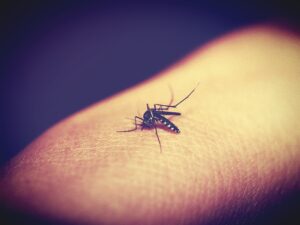- In October 2022, the Ministry of Health issued a cholera alert after 61 cases were confirmed across six counties in Kenya. The outbreak was believed to have originated from a wedding festival in Kiambu County and spread to Kiambu, Nairobi, Murang’a, Kajiado, Nakuru, and Uasin Gishu counties.
- On February 13th, 2023, two children died, and eleven others were hospitalized at Webuye Referral Hospital in Kakamega after eating Githeri prepared by their grandmother in Matete Village.
- In early March 2023, 16 students at Upper Hill School were hospitalized due to a suspected cholera outbreak. 60 other students were also treated and discharged.
- The Ministry of Health reported that Nairobi had recorded over 500 cases of cholera and 85 fatalities since October 2022.
What Causes Diarhoea and Vomiting?
As healthcare workers, we are witnessing increased cases of watery diarrhea and vomiting, hotness of the body, and abdominal pain across the country. While there are many causes of these symptoms, we want to focus on two possible culprits: cholera and rotavirus.
What is Cholera?
Cholera is a bacterial infection caused by the bacterium Vibrio cholerae. It is typically spread through contaminated water or food. In Kenya, cholera outbreaks are most commonly associated with poor sanitation and hygiene practices, particularly in densely populated urban areas like Nairobi.
According to the World Health Organization, there are an estimated 1.3 to 4.0 million cases of cholera worldwide each year, resulting in 21,000 to 143,000 deaths.
What are the Symptoms of Cholera?
Cholera symptoms typically include:
- Watery diarrhea (often described as “rice-water stool”)
- Vomiting
- Rapid heart rate
- Loss of skin elasticity
- Dry mucous membranes (e.g. mouth, nose, throat)
- Low blood pressure
- Muscle cramps
How is Cholera Treated?
Treatment for cholera typically involves rehydration with oral or intravenous fluids, along with antibiotics, to help fight the bacterial infection. Prompt treatment is essential to prevent severe dehydration and potentially life-threatening complications.
What is Rotavirus?
Rotavirus is a highly contagious viral infection that affects the gastrointestinal tract. It is spread through contact with infected feces or vomit or through contaminated surfaces or objects. Rotavirus is most common in children under the age of 5, but it can affect people of all ages.
In the United States, the rotavirus is responsible for an estimated 200,000 outpatient visits, 55,000-70,000 hospitalizations, and 20-60 deaths each year.
What are the Symptoms of Rotavirus?
Rotavirus symptoms typically include:
- Watery diarrhea
- Vomiting
- Abdominal pain or cramping
- Low-grade fever
- Dehydration
How is Rotavirus Treated?
Treatment for rotavirus typically involves managing symptoms, including rehydration with oral or intravenous fluids. Most people recover from rotavirus within a few days without any specific treatment. However, severe dehydration can occur, particularly in young children, and may require hospitalization.
What is the Difference between Cholera and Rotavirus?
While cholera and rotavirus can both cause watery diarrhea and vomiting, there are some key differences between the two infections:
- Cholera is caused by a bacterial infection, while rotavirus is caused by a viral infection.
- Cholera is typically spread through contaminated water or food, while rotavirus is typically spread through contact with infected feces or vomit.
- Cholera symptoms often include muscle cramps, while rotavirus symptoms often include low-grade fever.
- Cholera treatment typically involves antibiotics, while rotavirus treatment typically involves managing symptoms and rehydration.
What are the Complications of Cholera and Rotavirus?
The most significant complication of cholera and rotavirus is severe dehydration, which can be life-threatening if left untreated. Other complications may include electrolyte imbalances and kidney failure.
How Can I Prevent Cholera and Rotavirus?

Prevention of cholera and rotavirus involves good hygiene practices, including:
- Washing hands frequently with soap and water, especially after using the toilet and before eating or preparing food.
- Avoiding contaminated water sources, and drinking only safe, clean water.
- Properly cooking and storing food to prevent contamination.
- Disinfecting surfaces and objects that may be contaminated with feces or vomit.
In summary, the symptoms of cholera and rotavirus can be similar, but the causes, treatments, and complications are different. It’s important to seek prompt medical attention if you or your child experiences severe diarrhea, vomiting, and dehydration, as these symptoms can be life-threatening



